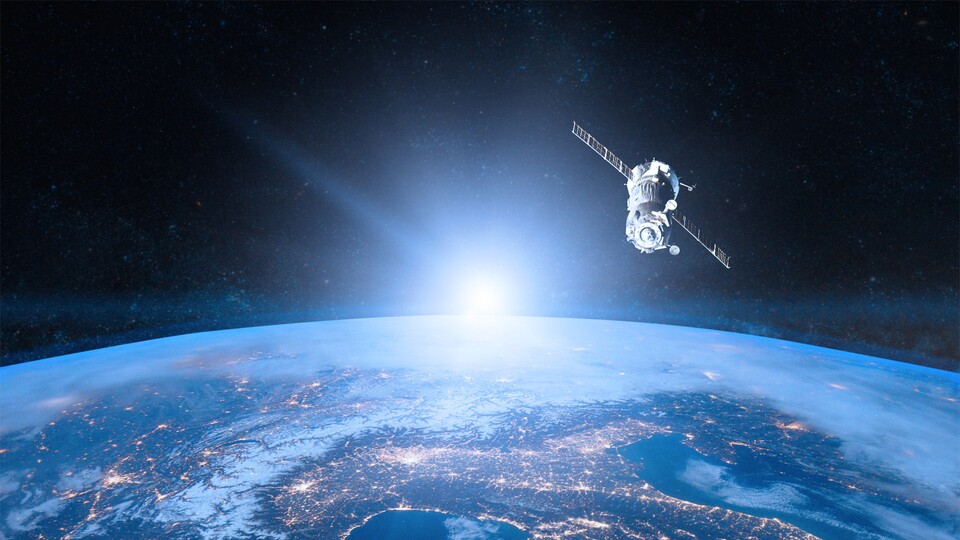
Unlike lost keys or cell phones, lost satellite junk poses a major threat. If these objects crash into functioning satellites or the ISS space station, this can trigger a catastrophic chain reaction. (Paopano, Adobe Stock))
Advertisement
Everyone knows those days when the front door key just won't show up and the cell phone ominously disappears into the apartment. But what actually happens when a country loses something… for example, a satellite in orbit?
This curious case happened to the USA in the 1990s. Their satellite called IRCB (Infra-Red Calibration Balloon S73-7) disappeared without a trace from all radars in the space debris around our planet. Now, according to a Gizmodo article, it has resurfaced after 25 years.
Why is that important? Over 20,000 large objects are tracked and observed by our ground radars. Keeping track of all space debris and functioning satellites is essential for today's space travel. This is the only way to avoid accidents.
We have already discussed in this article why space debris poses a great danger to our modern society: the Kessler effect.
Advertisement
In detail: Small satellites already existed during the Cold War. The IRCB became loud Gizmodo Launched into space by the Air Force in 1974 as part of a test program, it was part of a larger reconnaissance satellite called the KH-9 Hexagon (more on that in a moment).
- The IRCB is 66 centimeters wide and was designed to be placed in a circular orbit at an altitude of 800 kilometers.
- There it should be inflated as a calibration target.
- Its mission failed and it has been considered space junk ever since.
- After being able to track him for some time, the radar devices lost him several times – most recently in the late 1990s.
For those interested: You can see what a spy satellite from the Cold War looks like here. The KH-9 Hexagon series – also called the Big Bird – was launched into space between 1971 and 1986.
Particularly exciting: The clip shows the technical inner workings as well as the crazy way in which the captured images were shot back to Earth:
Link to YouTube content
US Space Force finds IRCB again after a long time
Jonathan McDowell, an astrophysicist from the Harvard-Smithsonian Center for Astrophysics, reported on the success of the so-called 18th Space Defense Squadron on X (formerly Twitter) a few weeks ago. A Squadron analyst appears to have managed to identify IRCB:
Link to Twitter content
According to Gizmodo, McDowell comments on why such tracking is so important:
It's basically like air traffic control. All this stuff is floating around and when you try to fly through it you want to know what the dangers are.
This means that with every new rocket launch it must be checked whether the trajectory of the rocket and that of any scrap parts do not overlap. Tracking satellites in geostationary orbits is not that easy.
According to McDowell, there is something like a blind point:
There is actually a gap in tracking. When something orbits the equator, it can hide from pursuit.
Pretty strange: According to Gizmodo, unexpected maneuvers by satellites can also result in scientists having to search for them afterwards. As a rule, this kind of thing happens more often with uncontrollable space debris.
Author Kevin always imagined tracking satellites and debris to be very simple using today's means – at least for larger objects. Would you have thought that it would still be difficult today? Do you know the dangers of the Kessler effect? What do you think should be done to better track or, at best, reduce scrap? Feel free to write it in the comments.